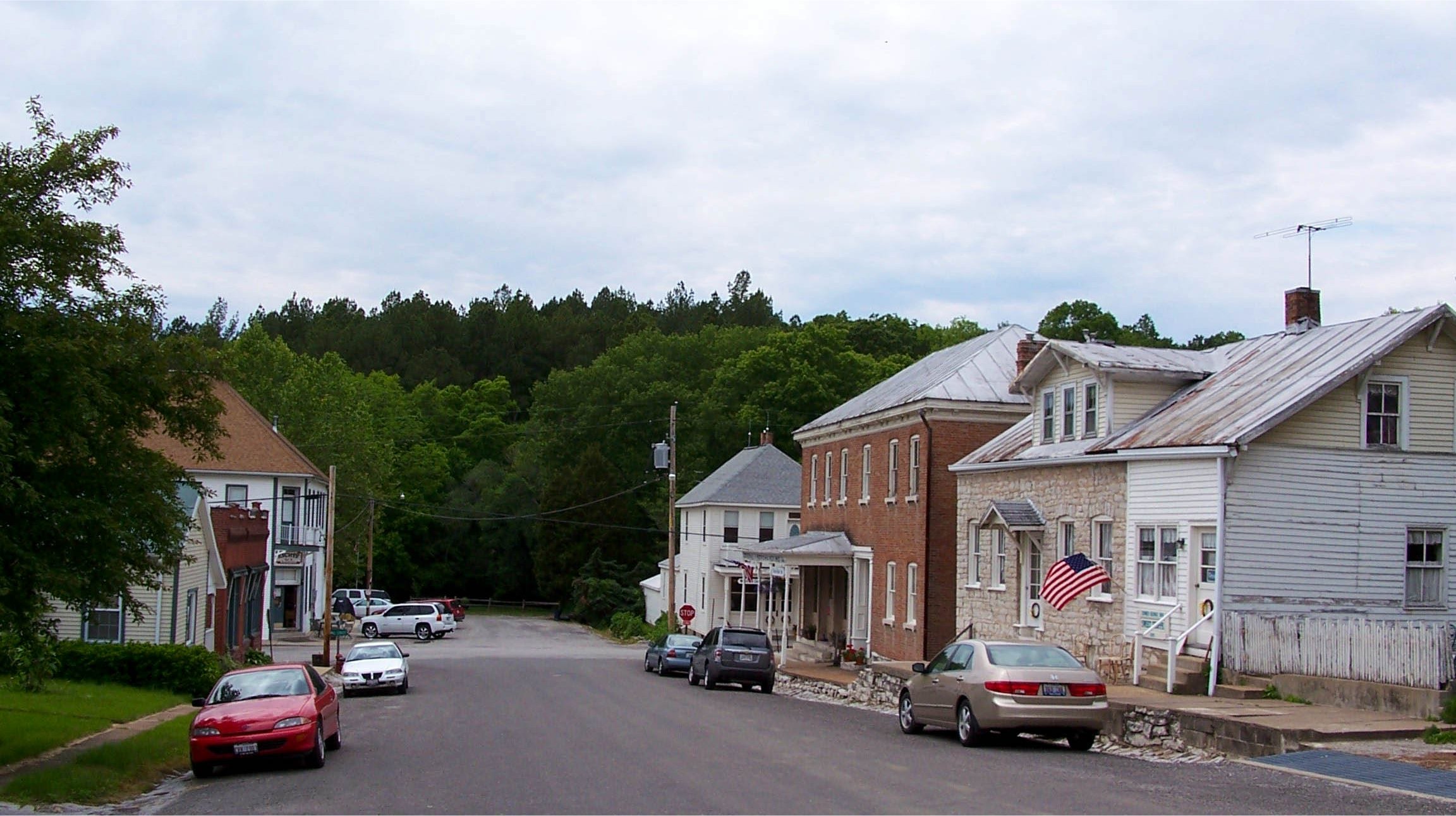Market Street
Prairie du Rocher, Illinois
618-284-7396
For almost a century, beginning in 1673 when Louis Joliet and Jacques Marquette explored the Mississippi River, France claimed the Illinois Country. In 1718 the French reorganized the administration of their American possessions and removed the Illinois Country from Canadian jurisdiction and made it part of Louisiana. The Government of this vast territory was located in New Orleans and turned over to the Company of the Indies, a commercial enterprise chartered by King Louis XV. In December of 1718 a contingent of soldiers, officials and workmen were sent north to establish a civil government in the region. A wooden fort was soon constructed eighteen miles north of the village of Kaskaskia from which the civil authority would operate and whose military presence it was hoped would pacify the Fox Tribe.
This wooden stockade was surrounded by a dry moat held several interior buildings including a storehouse and a counting house used by the Indies Company. The stockade, named Fort de Chartres in honor of Louis duc de Chartres, son of the regent of France, quickly deteriorated due to frequent flooding. Work on a larger fort, located farther inland, began around 1725. By 1731 the Company of the Indies went out of business due to bad management, poor relations with the local Native Americans, and the failure to discover any gold or other precious metals. In January of 1731 the company returned control of Louisiana back to the king. In 1747, with the second fort in considerable disrepair, the garrison relocated to nearby Kaskaskia.
During the 1730's the French leaders began discussing building a stone fort to protect their interests in the region. Though no precious metals were found, profitable lead deposits had been found on the west bank of the Mississippi near Ste. Genevieve and the rich bottom lands yielded substantial crops which fed New Orleans, St. Louis, and the rest of the territory. Construction of the new fort was slow due to dissension on where the fort was to be located. Construction finally began in the 1750's and although the fort was operational by 1754, additions and improvements continued until 1760.
In 1763 France surrendered the Illinois Country along with most of its North American possessions to Great Britain when it signed the Treaty of Paris that ended the Seven Years War. British troops of the 42nd Royal Highland Regiment took possession of Fort de Chartres on October 10, 1765. The British did little with the newly renamed Fort Cavendish although its engineers attempted in vain to control the erosion caused by the Mississippi. Eventually the British concluded that the fort had little value and it was abandoned in 1771. A year later the south wall and bastions collapsed into the Mississippi River. Continued flooding, erosion and decay caused the fort to slowly disappear so that by 1900 the only remnant of the fort that existed above ground was the powder magazine, considered by many to be the oldest building in Illinois.
The Lewis and Clark Connection
Fort de Chartres was primarily ruins, having been abandoned by the British for over 30 years, when Clark made this entry on December 4, 1803: “… at 2 miles past the mouth of a Small Creek on the Larbd. side, opposit the upper point of a small Island; and lower point of a large Isld. situated opposite Old fort Charters (4) came to on the lower point of a Small Isld. Lbd. side imediately opposit the Old Fort …”
Visit our special Lewis and Clark Section to learn more about the Corps of Discovery’s experience during their stay in the Middle Mississippi River Valley. greatriverroad.com’s special coverage includes information on all of the region’s sites and events as well as supplemental articles relating to the expedition’s experience during the winter of 1803-04.
In 1913 the Illinois legislature authorized the purchase of the stone fort site and the powder magazine was restored about 1917. In the 1920s portions of the building and wall foundations were exposed, and in the 1930s the Works Progress Administration reconstructed the gateway and two stone buildings. Today visitors will find a partially rebuilt eighteenth-century fort. The north wall contains bastions, a gatehouse, musket ports, embrasures for cannon, and the restored powder magazine. The King's Storehouse is home to the Piethman Museum, which uses items discovered during archaeological research near the fort, other artifacts, and exhibits to interpret life in Illinois during the colonial period. The East Barracks and the Government House have been outlined by wood frames, a technique called ghosting, to provide a sense of their original size and form.
Fort de Chartres State Historic Site holds many popular annual events. An annual two day Rendezvous is held the first weekend in June and features shooting competitions, military drills, dancing, music, food, and traders of eighteenth-century style goods. The first weekend in October marks the site's French and Indian War Assemblage, a Living History event that portrays life during the time period of 1754-1763. A listing of events at Fort de Chartres and other area events can be found on the Randolph County Calendar page.
Visiting Fort de Chartres State Historic Site
Visiting Hours
Thursday - Sunday: 9 am to 5 pm
Closed on Major Holidays
There is no charge to visit Fort de Chartres State Historic Site, although donations are appreciated.
Explore the community of Prairie du Rocher, Illinois area.















